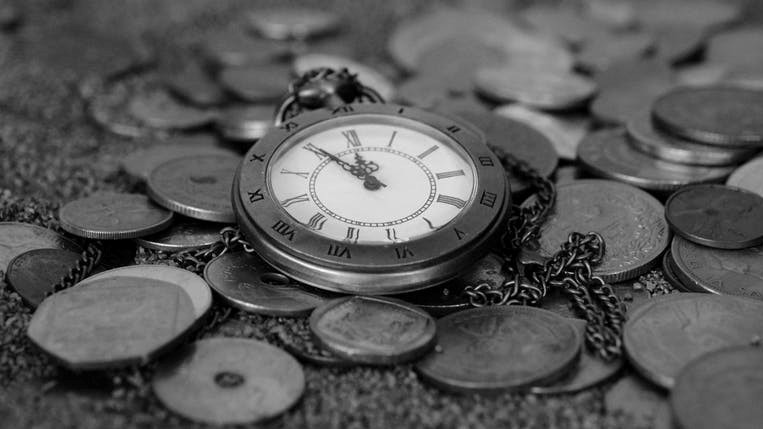
The difference between business debt collection and enforcement is not always clear. This is because the term ‘debt collection’ is one of the many used as an umbrella term rather than to refer to its real meaning.
However, there are significant differences between the two processes.
Let’s make this clear
Debt collection agencies (DCAs) chase debts on behalf of creditors – they usually send letters or emails and may persistently ring you, but they don’t have the power to take possession of your property.
Enforcement can be undertaken by bailiffs who have the power to take possession of your goods on their attendance if the money that they are chasing has not been paid.
Read on to discover more about their powers they hold and the processes involved…
The difference between debt collection and enforcement
When creditors have been trying to recover a debt to no avail, they often instruct a DCA (Debt Collection Agency) to recover the debt.
This will consist either of selling the debt altogether for a nominal fee, or for a percentage on a ‘no collection, no fee’ basis.
Once instructed, the Debt Collection Agency will send letters to introduce themselves and start to text, phone and email the debtor to try to collect the money that is owed.
While some debt collectors may come to the debtor’s address to request payment, they do not have any powers; they can’t enter the property to take control of goods or even threaten to do so.
If a DCA (Debt Collection Agent) does so, they are abusing their powers by misleading the debtor as a tactic to collect payment. This is an offence and should not be tolerated.
The main reason that debt collectors are used by creditors is that the process can be sparked quickly with no need for court proceedings (and therefore very little to no cost). For debtors that they believe can pay but are avoiding doing so, this can be a very effective way of signifying that they will not let the debt go unpaid.
Enforcement is still an option after a debt collection agency has been appointed and been unsuccessful.
The difference between debt collection and enforcement
The first step towards a creditor using enforcement to address a debt is (in the vast majority of cases) to inform the County Court of the outstanding amount which must be a minimum of £300. If the case is won, a CCJ (County Court Judgement) will be awarded.
The debtor will be notified of the 14 day period they have to pay, and if this is not achieved then the creditor is able to take enforcement action up to six years from the date of judgement.
If this path is chosen by the creditor, then either a CCB (County Court Bailiff) or a HCEO (High Court Enforcement Officer) will be instructed to collect on the debt.
County Court Bailiffs are only able to enforce judgements of less than £5,000 and act under a warrant of control. High Court Enforcement Officers are able to enforce judgements of anything over £600, other than those protected by the consumer Credit Act. Both of these are referred to as EAs (Enforcement Agents).
There are 4 enforcement stages that must be followed by the agents
-
Notice of enforcement will be sent
This gives the debtor 7 clear days to pay the debt before anyone will attend their property. If payment is not made…
-
The enforcement agent will attend the debtor’s premises
A writ of control authorises the bailiff to enter the premises peaceably and take control of goods to the value of the debt.
Entering the premises peaceably means that the EA (Enforcement Agent) is able to walk through an unlocked front or side door if needed. Of course they are not permitted to climb through windows or cat flaps!
If the payment is still not made…
-
The enforcement agent will seize goods to the value of the debt
At this stage, usually an arrangement is made between the creditor and debtor to pay the outstanding amount over a set period of time. In this case, if any payments are defaulted the bailiff is likely to re-visit, as the assets remain under the control of the agent until the debt has been paid in full.
If a down payment is still not made…
-
The agent will remove and sell the assets to cover the debt
This stage is self-explanatory – if the debt it not paid by any other means then the debtor has instructed the Agent to load up their vans and put the assets to auction in order to recover the debt.
Each of these stages have a separate fee that is chargeable to the debtor, along with the 8% court and judgement interest costs – these charges are regulated.
You can read more about these stages and the fees involved in our free guide.
Interest charged by the creditor
For B2B (Business to Business) debts, creditors are also able to add late charges on the amount due before it gets to the stage of either debt collection or enforcement; these rates will generally be as follows…
| Debt | Charge |
| Up to £999 | £40 |
| £1,000 up to £9,999.99 | £70 |
| Anything over £10,000 | £100 |
The base rate of 8% (set by the Bank of England) can also be charged as daily interest fees, regardless of the recovery method used.
Once a CCJ (County Court Judgement) has been awarded, judgement interest will start to accrue, but this is also currently set at 8% so if interest has already been accruing then it will make no odds.
Next steps
We hope that this post has satisfied your understanding of the difference between debt collection and enforcement. If your company is struggling to pay its debts when they fall due, or you are experiencing late payments from debtors yourself, then we can help! Just give us a call on 01472 254914.
Author

Emma Blyth
emma.blyth@forbesburton.com
Related Articles
We're here for you.
As a dedicated team of Advisers and Consultants our aim is to help you fix the issues and solve the problems within your business.
Find out more →

